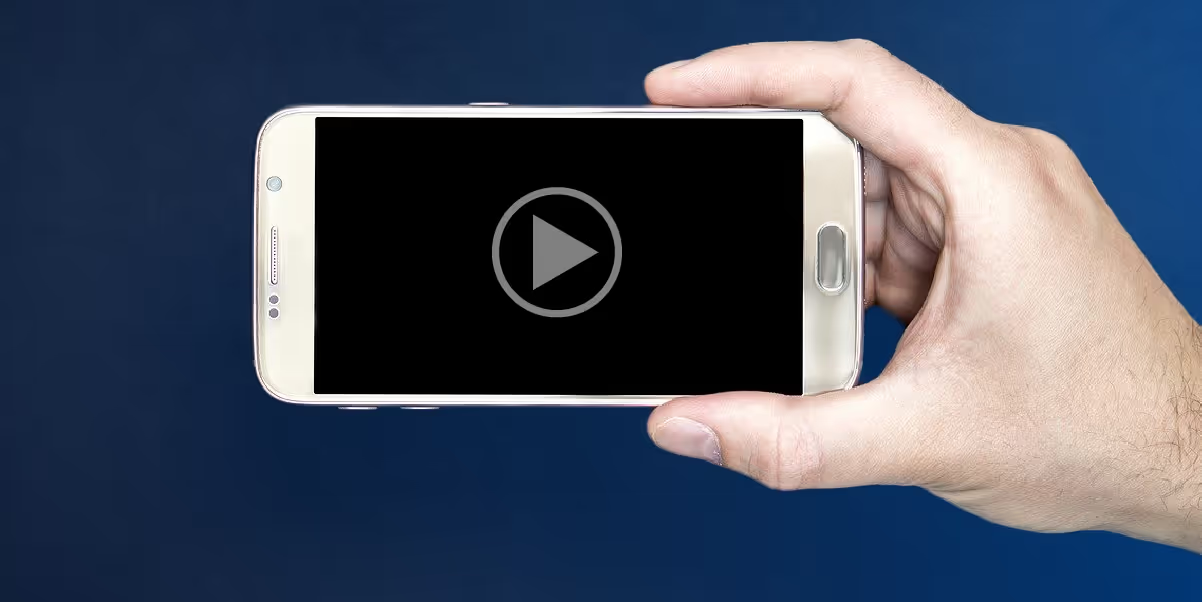Video-based learning is a huge part of the present and the future of instructional media






As I discussed in part 1 of this series, learning content has been delivered in video formats almost since the first video formats were invented.
It all started in film and then made the obvious transition to video as did all recorded content. We went from film to video to digital over the last century but it’s been the last decade that has seen the most change.
With the expansion of broadband connectivity, mobile devices, increased processing, and reduced costs, everyone is consuming video in new ways and creating it as well, including video-based learning. This is a big change for instructional designers and training departments.
In this article I’m going to highlight a few trends affecting video-based learning that may surprise you.
Whether you like these trends, applications, methods, or styles, isn’t the point. I’m not looking to convince you one way or the other. The reality is, video-based learning’s future is right in front of you if you take the time to look.
Perhaps one of the most despised new trends in video production is the recording of video in the vertical or portrait format instead of horizontal or landscape.
You can thank the mobile phone for this trend. It’s the perfect example of NON-professionals – unclouded by years of professional tradition – getting access to professional quality video production tools.
It’s only natural to hold your cell phone upright, right? It’s easier to hold it that way in one hand while you tap the big red button with a finger on your other hand. For those early mobile phone video content producing n00bs, turning the phone “sideways”, aka landscape mode, as the professionals do was the “wrong” way to do it.
When change occurs in any industry, most people fall into one of two camps. You are either in the, “OMG, you idiot. You’re doing it wrong!” camp. Or you’re in the, “Wow, look how the world is using this product. I’ll bet I can find a way to make use of that!” camp.
Nobody seems to mind watching vertical video on snapchat, Instagram, or any other mobile social media app. What was once taboo is now the norm.
And you can tell it’s gone mainstream because you’ll notice local, national, and international news programs broadcasting vertical videos submitted by viewers. That’s just how tech trends progress.
The next time you find yourself looking at a bunch of people half your age doing something you’d never do, stop. Instead of assuming it’s wrong, see if you can spot the opportunity – really, what would be wrong with vertical video-based learning?
As you may remember from part one of this series, the evolution of video-based learning wasn’t just about how video was created but also how it’s consumed.
Video-based learning is on demand and available to anyone, and instructional designers aren’t the ones leading the charge.
Actually, instructional designers are never leading the charge…in anything. That’s not our job.
The most important part of an instructional designer’s role is playing the part of anthropologist. Understanding the audience we support also means understanding their environment and how they consume media content, not how we think they should be consuming content.
And this is where things might get uncomfortable for instructional designers unable to see the opportunities for improving video-based learning now available to us because of changes in technology.
If you can get past the idea of vertical video being bad, you’ll see the possibilities for video-based learning in TikTok, Snapchat, and Stories in a new light.
It’s these social platforms that have made the shooting of vertical video mainstream.
But it’s more than that. It’s the ability to tell a story, deliver engaging information, or instructions, in a familiar way to your viewers. (Hey, doesn’t that sound like video-based learning?)
Just because you don’t see the value in vertical video doesn’t mean it’s not seen and accepted by your target audience. Put aside your bias and watch this TikTok video.
Did you learn something?
Maybe you didn’t like the song. Maybe the font selection wasn’t just right.
But guess what? It didn’t cost $50,000. She’s not an instructional designer, or a professional video producer, but she has an audience of learners. And she’s connecting with them and teaching them, using video-based learning. And isn’t THAT the most important part?
As we discuss the amazing advances in technology it’s easy to see how far we’ve come in supporting accessibility standards with closed captioning and language translations.
What used to take hours and hours of listening to video and typing the words, is now done with the click of a button.
Upload your video, ask the system to provide closed captioned text, and in a few minutes its done. It might not be perfect but it can be edited and in many cases it’s close enough. And it’s a very valuable tool for video-based learning.
You’ll notice most YouTube videos have captioning options available. And now Instagram videos are popping up with creative colorful captions as well.
You might think this is because of the amazing altruistic nature of social media creators.
Sadly no. Reports like this one show us that most mobile video viewers watch with the sound off:
“The report recommends that advertisers caption their advertisements because 80% of consumers are more likely to watch an entire video when captions are available.”
But hey, who really cares why it happened – the good news is it drove a major change that supports those with hearing disabilities.
And it’s become a critical thing we need to consider with all our video-based learning.
Video-based learning started out as a medium that had to stand on its own.
At best it was part of a classroom curriculum that included other discussions and activities. But before the industry transitioned from analog to digital, all content needed to be included in the video.
In the digital world we live in today web browsers offer us the ability to mix and match media on one page. And that’s a great opportunity for creating more successful video-based learning.
If you’re looking for a learning opportunity on YouTube it can be very frustrating to find videos with no additional text content in the description.
Over time, though, YouTubers have discovered how to add value to their videos for their viewers. The best instructional YouTube videos, and web sites, offer everything you need to be successful in your task: lists of needed supplies, complete audio transcripts, downloadable resources, and in some cases chat or email access to the creator. Let’s also not forget about the shared community-style learning offered by the comments.
But that’s YouTube. Does this apply to modern eLearning’s use of video-based learning?
Absolutely.
HTML5, responsive design, xAPI, and other technologies allow us to create a new form of multi-media centered on video-based learning.
Where multi-media used to mean a special experience delivered in special formats like CD-ROM, today it means all the media for all possible content consumption preferences.
A browser or mobile app-based experience is the norm. HTML5, and whatever comes next, (dare I say HTML6) is the platform for all future eLearning, including video-based learning.
Watching a video becomes only one part of the learning experience for video-based learning.
When you create learning experiences that include additional content with the video you offer the learner a chance to follow their own plan.
Some will read text content first. And if they get what they need, they move on. Others might still feel like they’re missing something and watch the video in the hopes of it filling in the gaps.
Other learners will start the video, and if it doesn’t hold their attention they will let it continue to play while they scan the text and other supporting content.
This is all supported by research from the world leaders in user experience design, The Nielsen Norman Group. The benefits of this approach are clear for video-based learning.
Let’s take a look into the possible future of video for new opportunities that might influence video-based learning.
Two new platforms have recently launched and have gained a bit of attention, so it’s worth taking a look at them.
They are Byte and Tangi.
Byte takes us back to the looping video fun of Vine.
Tangi is a YouTube style platform specifically for crafters. All content is instructional content by and for makers. Their slogan is “Learn new things everyday”. It’s pretty clear that it’s all about video-based learning.
And guess what was the first thing I noticed about Tangi?
Lots of vertical video!

Another big advancement is in multicamera production.
We are all so used to multi-camera productions that we take it for granted most of the time. Until recently that aspect of video production was still expensive and required advanced technical knowledge and skills. But even that is changing with new apps and platforms, which in turn create new opportunities for us to create better video-based learning.
The most recent is an announcement by Filmic that their app now lets you record from two iPhone cameras at the same time. This is possible because of the iPhone’s new added multi-cam support capabilities announced in September of 2019.
There is also Switcher Studio that has been around for a while and continues to improve. They market it as “a live video production studio in your pocket”. And it’s true.
There are others in the market that you can find with a quick search. You may not realize it, but you’ve probably watched live streams that use these new production platforms. And it’s going to be exciting to see how this becomes new opportunity for video-based learning.
Video-based learning production and consumption has changed significantly over the years.
My hope is that you will look for opportunities to embrace the change and improve your instructional media. After all, you and your training team have the power of a complete production studio available within your laptops and mobile devices.
Most importantly, watch how people interact with their devices. And yes, consider vertical video as an option.
New platforms like Tangi and all the others are a great place to start learning. Change your mind set by engaging new video-based learning technologies with an open mind.
And take a look at what we offer in dominKnow | ONE for video-based learning. We have a new easy-to use feature to create playlists from YouTube and Vimeo videos, for example. Plus, we have really great features to help you create interactive videos.
And we don’t even care whether the video is vertical or horizontal!
Sign up for a free 14-day dominKnow | ONE trial right here.
.avif)
Instructional Designers in Offices Drinking Coffee (#IDIODC) is a free weekly eLearning video cast and podcast that is Sponsored by dominknow.
Join us live – or later in your favourite app!